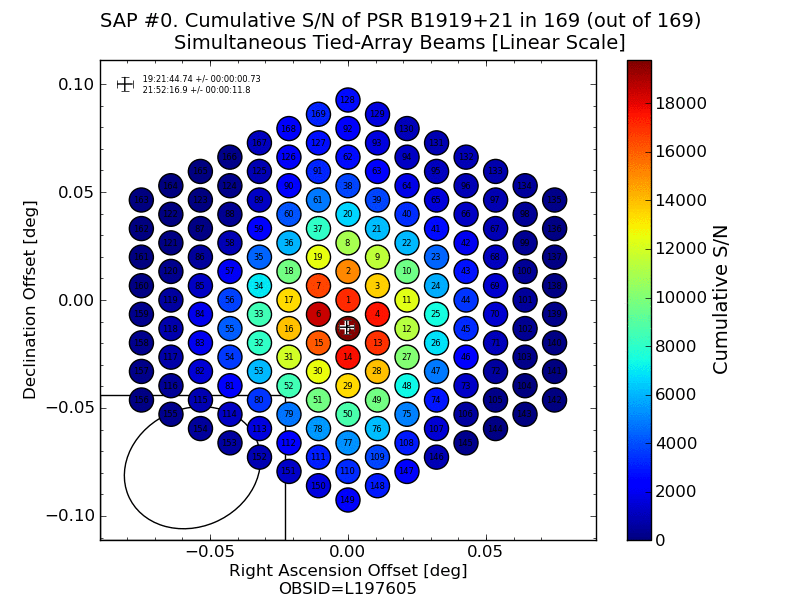Daily Image
23-01-2014Tracking tied-array beam wobble
| Submitter: | Wilfred Frieswijk, Jason Hessels & Vlad Kondratiev |
| Description: | LOFAR's many-beam tied-array mode is not only great for surveys, but also very useful for mapping the array beam shape using pulsars. This movie shows such an experiment, in which 169 simultaneous beams are used to map the LOFAR full-core tied-array HBA beam at 126-161 MHz. Each circle represents an individual beam, and its color represents the detected signal-to-noise ratio of the bright pulsar B1919+21. Note that the pulsar is intrinsically variable with time, so only the relative colors matter. The pulsar itself is at the phase center, in the direction of beam 1. The expected beam shape is shown in the bottom-left corner. This sequence of 2-minute observations, each separated by 20-minute gaps shows that, though the measured beam shape is close to the model prediction, its centroid is also bouncing around due to uncalibrated ionospheric phase delays. Such effects are also detectable in LOFAR imaging data. Here we're interested in determining how large an effect tied-array beam wobble will have on the raw sensitivity of beam-formed observations that use the full core. Further tests are ongoing to determine how typical these observations, which we obtained in the afternoon of January 10th, 2014, really are. |
| Copyright: | W. Frieswijk |
| Tweet |  |
